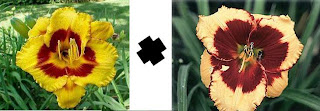Craig Pittman's The Scent of Scandal, published last month by the University Press of Florida, deserves to be read by everyone in the orchid world. The book overviews the conflicting interests and personalities that fueled the kovachii controversy, a scandal that culminated in police raids, arrests, and ruined lives.
Most participants in the orchid world know at least the bare bones of the story: Michael Kovach visited Peru and saw a stunning new species of slipper orchid for sale at a small nursery. He brought the orchid to Selby Botanical Gardens in Sarasota. The Selby scientists realized they possessed the most important orchid discovery of the last several decades and rushed to publish a scientific description of the species. Kovach didn't have proper permission from Peruvian authorities to take the plant home, which might not have been such a big deal if Kovach decided to name the new species peruviana instead of kovachii. Sites with kovachii were stripped bare and plants were sold on the black market for thousands of dollars.
Pittman's book portrays Michael Kovach as self-obsessed and dishonest. Kovach knew he needed CITES permits from the import and export countries to travel with the plant. He knew he couldn't wait to acquire the right permits because Orchids was set to publish Eric Christensen's description of the new species as peruviana within weeks. Selby taxonomist Stig Dalström also comes off as shady and self-serving.
The kovachii controversy stems from personal greed and narcissism, but it's also a rich case study in institutional breakdown. Pittman describes Selby as a dysfunctional organizational that, in many ways, invited disaster. The scientists at the Selby Orchid Identification Center didn't see the need to assess the legality of the orchids brought to them by the collectors. They reasoned that they were scientists, not policemen or lawyers, but this attitude inevitably created big problems.
Meanwhile, the Selby leadership failed to oversee the scientists. They were so preoccupied with fundraising and institution-building that the scientists (who were housed in a separate building) developed an autonomous, and somewhat oppositional, culture. The orchid scientists regarded the Selby leadership as glorified wedding planners. In turn, the leadership thought that the scientists failed to appreciate how their botanical research was funded by weddings and fund-raising galas. The lack of mutual respect and communication among the different units at Selby led to a "circular firing squad," culminating in the ousting of Meg Lowman as executive director, mass resignations from the Board of Trustees, and a financial hemorrhage from legal fees and lost donations.
The Scent of Scandal is terribly compelling. It answers many of the lingering questions that surround the case, and it's full of fascinating personalities. But Pittman makes a couple of minor errors. He twice refers to Phalaenopsis as a "species" of orchid instead of a "genus." And he describes the Greek origin of the word "orchid" as referring to orchid roots (instead of pseudobulbs). Although these seem like little things, they kind of "jump off the page" if you've read more than a couple of books about orchids (but could be easily fixed in a second edition).
Craig Pittman's The Scent of Scandal brings needed clarity to the kovachii controversy. He sorts through the contradictory stories, Redlands Show rumors, and web forum gossip to convey the full story in all of its weirdness.
Put this book on your summer reading list. You won't be disappointed.







